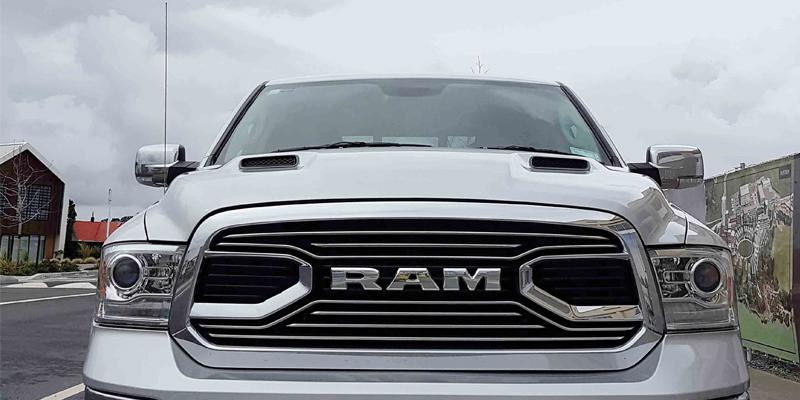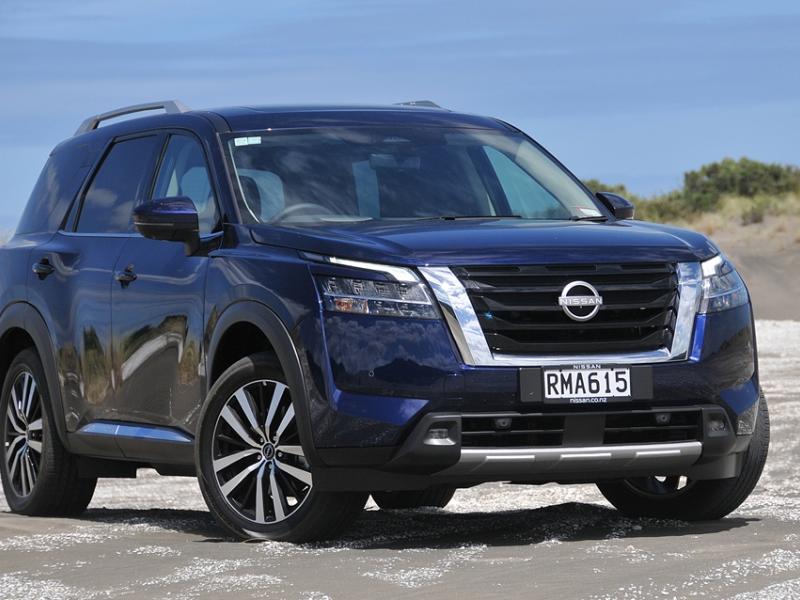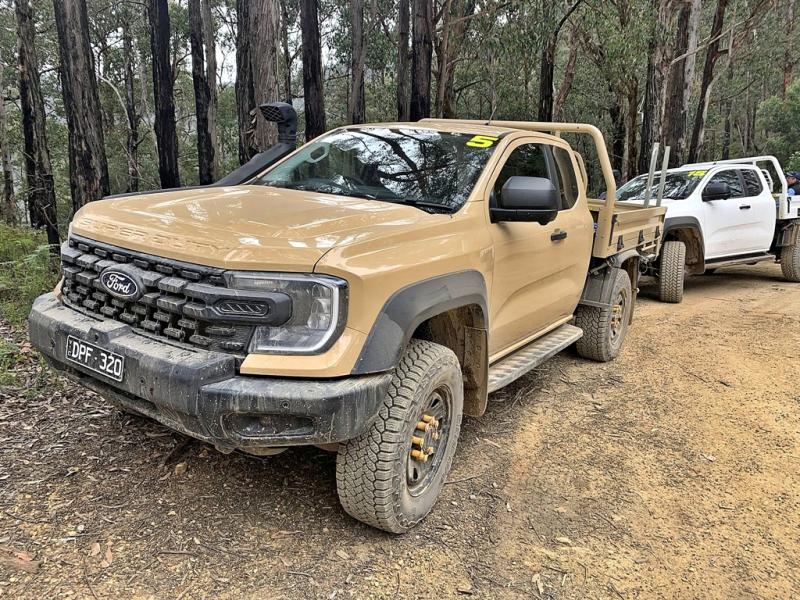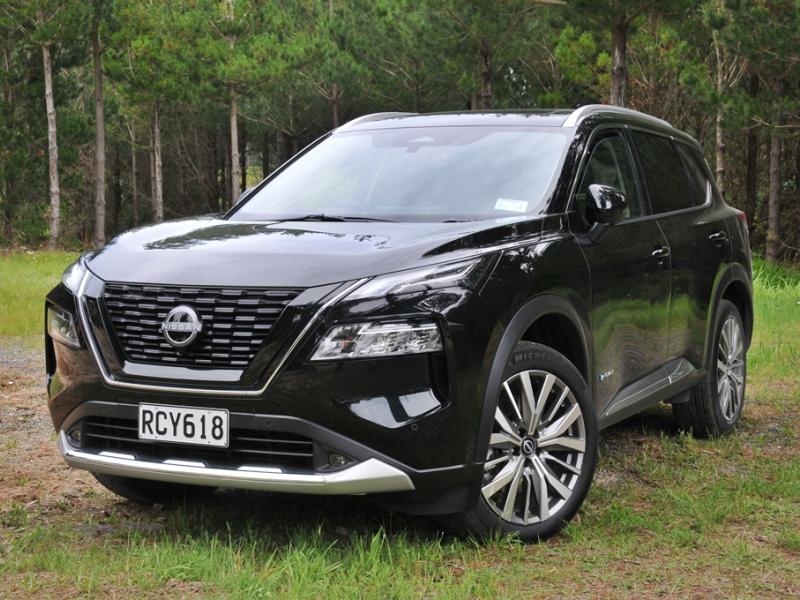‘Big things’ are expected of RAM’s latest RHD utility, the 1500. Fair enough, says NZ4WD Ross MacKay. The new petrol-fueled V8 is a beauty!
Look, because I’ve now driven the thing. I know. I ‘get it’, if you like. I understand, now, why importer the Ateco Group has added the 5.7 litre PETROL-fueled 4x4 1500 double-cab model to its local utility line-up.
Chances are, however, that if you haven’t climbed up (because that’s what you indeed have to do to get into the thing) into the cab and settled in behind the steering wheel, all you’ll see is its imposing, Greenie-threatening , ‘plus-size’ silhouette, and think to yourself, why would I ever need a truck as big as THAT? Particularly one which slurps rather than sips Marsden Point’s finest.
Which would be a hell of a shame, because I not only think that the RAM 1500 is a hell of a truck, I also think that it definitely has a place on – and if you dare – off our roads here in New Zealand.
But first, a little scene setting.
The 1500 is one of three RAM ute models on sale here, the other two being the heavier-duty Cummins diesel-powered 2500 and 3500 models. All three are designed and built (in Left Hand Drive form) in the United States by FCA US, before being shipped to Melbourne for conversion (via a comprehensive, factory-approved re-manufacturing process) to Right Hand Drive for Australian and New Zealand consumption.
Factory-backed
Here Ateco is making much of the fact that the 1500 is indeed a fully factory-backed model imported by an official factory-appointed distributor with a full national dealer network, supported by a NZ-based parts and accessories warehouse and sold with a factory-backed three-year/100,000km warranty complete with three year’s roadside assistance.
With so many – broadly similar – ‘Murica-built ‘trucks’ being imported ‘as-new’ or second hand, plus enough niche
specialists to do a RHD conversion if necessary, I guess I can understand why up to a point.
That point is ‘just’ $89,990 (Plus ORC) for what I suppose you could call the ‘base model Express Quad Cab, and $114,990 +ORC for the Laramie you see here.
Yes I am well aware that $90-$115K (give or take) is a hell of a lot of money for any sort of vehicle.
‘Needs must’ of course, and – particularly if, like the brothers who run an earth-moving business from their home just up the road from where I live, your ‘truck’ is also your de facto office and meeting/board/lunch room – then it is small price to pay.
Even two or three years ago a RAM 1500 would have seemed impossibly big for day-to-day use, particularly in a built-up urban area. Once you get behind the wheel however the sheer imposing size literally melts away... until, of course, you rock up to your local supermarket and try and park the thing.
My local Countdowns are borderline OK because both have ‘flowerbeds’ planted with soft, malleable tussock stock which you can back the tray over to at least bring the huge, bluff nose (sort of) in line with the usual selection of late-model SUVs and last-legs Jap Import clunkers that populate such places.
Good luck but you are on your own, however, if you blithely drive into a typical city car park like the below ground one I regularly use in downtown Auckland (too many 90 degree turns) or – say – Dunedin’s claustrophobically low-roofed Golden Centre one which you access off Filluel Street.
Relatively speaking
Size, of course, is relative. Sat beside one of the double-decker buses which briefly run the gauntlet of Auckland’s evening ‘rush hour’ as I drive home along Constellation Drive, a RAM 1500 appears perfectly normal; until you come up to the set of traffic lights at the motorway on/off-ramp intersection and realise that you can’t actually see the – admittedly low-slung – Toyota 86 that you know is in the lane on your left!
But back to the blokes who live up the road from me.
Since they moved in I’ve always admired their taste in ‘work vehicles;’ from one of the rare and very good V6-petrol Toyota Hilux double cabs (sitting on expensive 15 in. dia. alloys and big (at least 32 in. M/Ts) to their more recent run through two or three different (but always with a snorkel and uprated wheel and tyre package) Ford Rangers.
Now I’ve never actually run an earth moving company (or indeed, even driven anything more challenging than a small bulldozer) but I’d imagine that a lot of the time, either brother would be on the road (on the phone too, no doubt) travelling between jobs, or parked up on rough terrain at jobs.
I’d also imagine that their vehicles would have to be able to tow everything from Hirepool diggers during the week to jet skis and (these blokes do live in West Auckland after all) speedway Midget trailers on a weekend.
Theory vs practise
In theory one of the diesel-fueled 2500 or 3500 models would also tick all the ‘sensible business decision boxes.’ But when RAM itself helpfully points out, that the 1500 is now the only (petrol-fueled) V8 ute available new here, and that the V8 in question is a pukka 5.7 litre ‘hemi,’ all I can say is... the line starts behind me!
It does because, as my earth moving mates ‘up the road’ have no doubt already discovered, the RAM 1500 has got to be one of (let’s see) the most (Hmmmm, thinks) practical, easy-to-use, capable, roomy, comfortable, quick, not to mention downright fun 4x4 ‘utes’ I have ever driven. Period!
Sure it is still a ‘truck’ at heart, as the ratchet-style foot-operated ‘e-brake’ reminds you. In saying that, RAM has done everything in its power to make the driving experience anything but.
The ride – from an all-coil suspension set-up – borders on the plush, but handling is never anything but crisp, steering nice and direct (thanks to a new electric rather than hydraulic assistance package) and with a braked towing capacity of 4.5 tonnes my 1800-2000kg trailer and drift car combo might as well not have been there...
With years catering for the needs ofcontractors at home in the US I suppose I shouldn’t have been. But I was still surprised when I checked out the spec sheet and found out that the seats front AND back are heated, as is the steering wheel!
The only thing I didn’t really gel with inside, in fact, was the luxury car-like rotary dial RAM is now using for drivers to ‘change gears.’
That said the company’s latest eight-speed automatic is a beauty, and when it was pointed out to me how easy it now is to flick from Drive to Reverse (and back) when you are in a tight spot I realised the problem was with me, rather than the system itself!
Home on the range
Which just leaves me with some ‘housekeeping’.
Your local, friendly RAM dealer can offer you two different 1500 models. A Crew (five-seat) Cab Laramie-spec like the model I was offered a drive of, or what RAM calls a Quad Cab Express.
The key difference is in the relative length of the cabs and their respective trays, 1712mm (or 5 ft.7 as the ‘Muricans like to call it) for the Laramie, and 1939mm (or 6 ft. 4) for the Express.
If you didn’t know that the Laramie has a good metre of rear leg room you would probably think the Express was ‘roomy’ in the back. But there you go.
After years of watching average height Kiwis being shoe-horned into and back out of earlier generation ‘double-cab’ utes it was nice to be able to sit in the Laramie, turn towards my front seat passenger and joke about needing an R/T to communicate with each other, let alone the kids who appeared shipwrecked on their own personal desert islands in the back.
Sweet exhaust note!
Finally, no test of a vehicle (on OR off-road) powered by a factory-build V8 engine should be complete without some mention of its distinctive ‘aaaooooooofffff’ exhaust note. OK the Laramie I drove was equipped with an aftermarket twin chrome pipe system which combined just enough stat-up rumble and sweet low-frequency burble at idle with a close-to NASCAR howl up near with the red line. But I know I’ve turned my head when one with a factory-standard went past one day so it is probably fair to say you don’t NEED to replace the original system...
The 291kW (close to 400hp) engine might still only have the one camshaft and two-valves-per-cylinder but otherwise it is as thoroughly modern as any DOHC/32-valve bent-eight from Europe or Japan.
As well as coil-over-plug (distributor-less) ignition, it comes standard with two spark plugs per cylinder, a Variable Valve Timing (VVT) system, and a smart engine cylinder close down system (MDS for Multi- Displacement-System) which can shut off a cylinder in each back under light load to use less fuel.
If that is important to you, of course!







